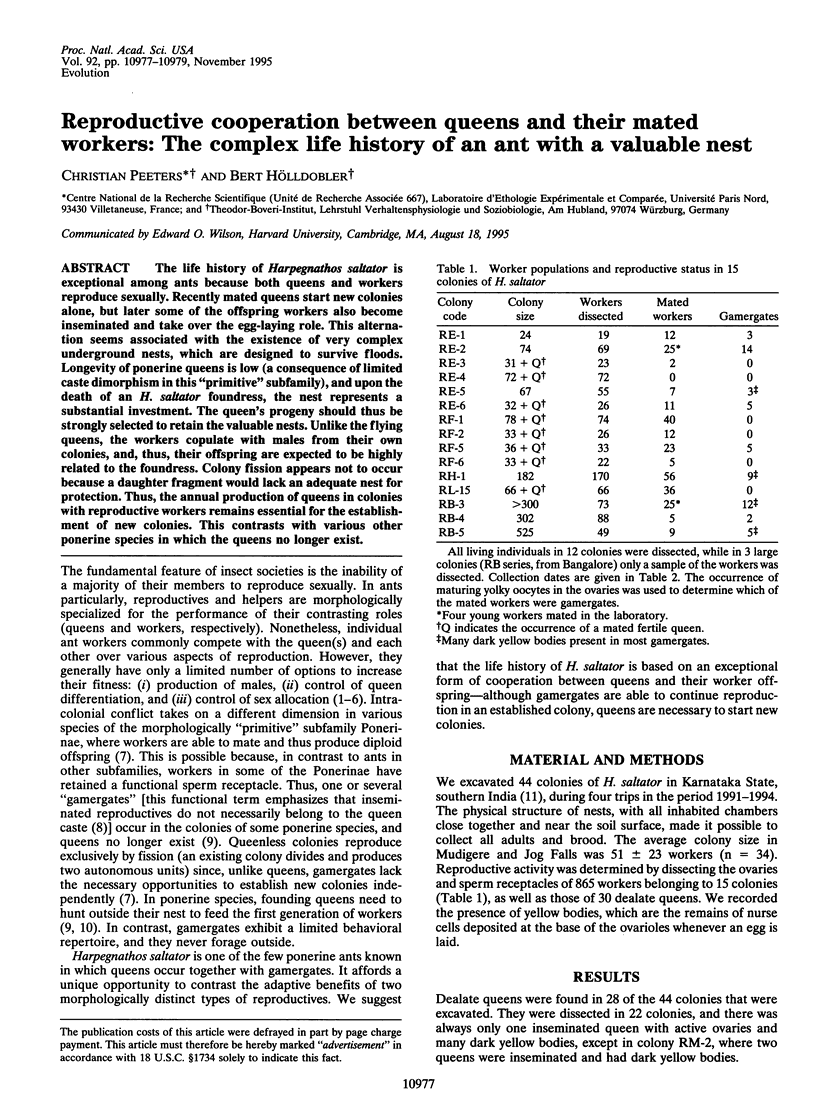Abstract
The life history of Harpegnathos saltator is exceptional among ants because both queens and workers reproduce sexually. Recently mated queens start new colonies alone, but later some of the offspring workers also become inseminated and take over the egg-laying role. This alternation seems associated with the existence of very complex underground nests, which are designed to survive floods. Longevity of ponerine queens is low (a consequence of limited caste dimorphism in this "primitive" subfamily), and upon the death of an H. saltator foundress, the nest represents a substantial investment. The queen's progeny should thus be strongly selected to retain the valuable nests. Unlike the flying queens, the workers copulate with males from their own colonies, and, thus, their offspring are expected to be highly related to the foundress. Colony fission appears not to occur because a daughter fragment would lack an adequate nest for protection. Thus, the annual production of queens in colonies with reproductive workers remains essential for the establishment of new colonies. This contrasts with various other ponerine species in which the queens no longer exist.
Full text
PDF





